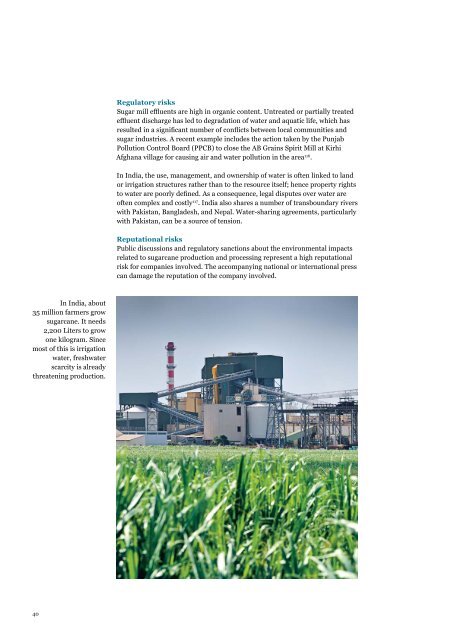YtDl2r
YtDl2r
YtDl2r
Create successful ePaper yourself
Turn your PDF publications into a flip-book with our unique Google optimized e-Paper software.
Regulatory risks<br />
Sugar mill effluents are high in organic content. Untreated or partially treated<br />
effluent discharge has led to degradation of water and aquatic life, which has<br />
resulted in a significant number of conflicts between local communities and<br />
sugar industries. A recent example includes the action taken by the Punjab<br />
Pollution Control Board (PPCB) to close the AB Grains Spirit Mill at Kirhi<br />
Afghana village for causing air and water pollution in the area 116 .<br />
In India, the use, management, and ownership of water is often linked to land<br />
or irrigation structures rather than to the resource itself; hence property rights<br />
to water are poorly defined. As a consequence, legal disputes over water are<br />
often complex and costly 117 . India also shares a number of transboundary rivers<br />
with Pakistan, Bangladesh, and Nepal. Water-sharing agreements, particularly<br />
with Pakistan, can be a source of tension.<br />
Reputational risks<br />
Public discussions and regulatory sanctions about the environmental impacts<br />
related to sugarcane production and processing represent a high reputational<br />
risk for companies involved. The accompanying national or international press<br />
can damage the reputation of the company involved.<br />
In India, about<br />
35 million farmers grow<br />
sugarcane. It needs<br />
2,200 Liters to grow<br />
one kilogram. Since<br />
most of this is irrigation<br />
water, freshwater<br />
scarcity is already<br />
threatening production.<br />
40


